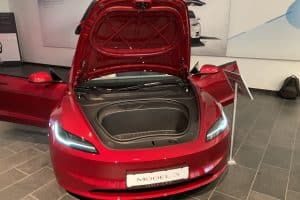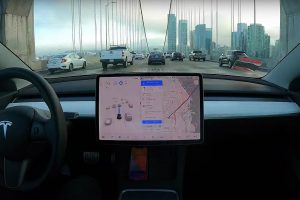Over the past several years, automotive manufacturers from all corners of the world have jumped head-first into electric vehicle production. In an attempt to catch Tesla, who has been recognized as the industry leader, car companies have tried all strategies, including undercutting pricing, but they’ll need much more than that to catch up.
Tesla’s most affordable vehicle is the Rear-Wheel Drive Model 3, which starts at $42,990 before incentives. It is far from the most affordable EV on the market, as several vehicles, both in production and planned for the future, have been marketed as the “Tesla Killers,” a term that was widely put to rest a few years ago.
There is no Tesla Killer, unfortunately, because those vehicles wouldn’t even exist if Tesla wasn’t around. They’re purely thoughts and eventual products of any automotive company because of Tesla’s mass influence on the automotive market.
Unfortunately, the angle that these car companies have come up with is, “If it’s cheaper than a Tesla, then people will buy it.”
But there’s a reason the 2023 Nissan Versa, which is priced at $15,730, isn’t the most popular car in the world: consumers want more than a nice, low price tag.
Customers take a lot of things into consideration: looks, features, technology, range, performance, and quality are just a few metrics that car buyers take into account when buying a new car.
When I read some of these headlines about cars that are expected to be the next big thing in the EV sector, it always seems to have something to do with price. But it goes much further than that.
In the EV sector today, Tesla still maintains a sizeable lead in terms of sales by model. The Model Y sold 251,974 times last year in the U.S., according to Kelley Blue Book data. The Model 3 was sold 211,618 times. The Model S recorded 32,675 sales, and the Model X had 26,121.
Even the Model X managed to outsell things like the Kia Niro, the Hyundai Ioniq, and the Volkswagen ID.4, despite being Tesla’s most expensive car and least popular model.
Why? There are many factors to EV ownership. The charging network might be the biggest influence, and Tesla dominates in that realm. It also holds a considerable advantage in technology, range, and performance.
Of course, looks are subjective, so it is not worth commenting on. But even if the best-looking car out there drove and operated like a piece of crap, nobody would want it.
Tesla’s advantages lie in places that are far past affordability. As previously mentioned, it goes past price and goes much deeper into what the company offers in terms of a variety of other metrics that make a car truly enjoyable to own.
Companies have long struggled with adequate charging, software, and other things that are hard to solve. It’s not an overnight fix, and Tesla may have much more experience in terms of having a car operate more like a phone than a vehicle. It will take time, and it will come around to these car companies on how to solve these issues.
But make no mistake, Tesla won’t be dethroned by cheaper options alone. Only if these cheaper options also offer superior software and adequate charging infrastructure, along with many other things, will Tesla be beaten.





